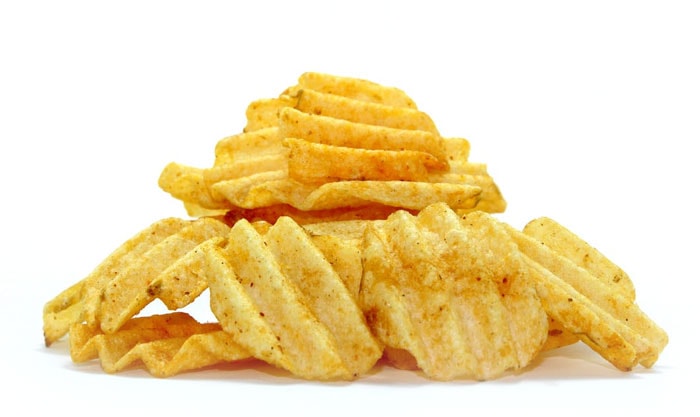
Written By: Owennie Lee, RD
Title: Registered Dietitian
Alumni: University of British Columbia
Last Updated on:

Most of us are aware that a diet high in sodium can lead to hypertension and other health problems. In early 2010, the American Heart Association lowered its recommended goal to no more than 1,500 mg sodium (equivalent to 2/3 teaspoon of table salt) per day in adults. With 75% of our sodium coming from salt added during food processing, cutting back on packaged foods is more effective than merely tossing your salt shaker. Other than the obvious high-sodium offenders, such as processed meat, canned soup, canned vegetables, sauces and frozen entrees, do you know where else sodium might be lurking? Take a look at the food duos below and see if you can spot the higher sodium food:

Table of Contents
Answer: 1 Kaiser Roll (590 mg)
The sodium from the Kaiser roll is likely to be from the sodium bicarbonate and other sodium-containing leavening agents (e.g., sodium aluminum phosphate) that are present in baking powder. Surprisingly, 50 salted peanuts only have 150 mg sodium (all from salt). You can reduce sodium further by choosing unsalted nuts.
Answer: Microwave Popcorn (215 mg)
While 1/4 bag of microwave popcorn has 216 mg sodium, 15 Lays Classic Chips only contain 180 mg sodium. Since chips are still a significant source of sodium and fat, they are not any “healthier” than microwave popcorn. Eat chips less often and try making your own popcorn from scratch to save on the unnecessary added sodium.
Answer: 1 Crescent Roll (620 mg)
Although chips are much saltier than the crescent roll, the amount of sodium found in one crescent roll is almost double that of 30 chips. Like the Kaiser roll example above, sodium-containing leavening agents are the source of sodium in the crescent roll.
Answer: 1 Slice of Devil’s Food Cake (370 mg)
Would you ever have thought that a sweet slice of cake could contain over twice the sodium as half a can of canned tuna (150 mg)? Your taste buds certainly cannot be trusted when it comes to judging sodium content!
Answer: One Bagel (440 mg)
We all know that bacon (2 slices contain 320 mg sodium) and other processed meats are chock-full of sodium, but it is a shocker to most that a healthy-looking bagel could contain even more sodium. Again, it is the sodium in the leavening agents that cause the sodium to creep up.
Baked goods and breakfast cereals actually represent almost 17% of the total sodium intake of the average American. When it comes to judging sodium content in food, you cannot rely solely on your taste buds. Always check the nutrition facts label and pay attention to serving sizes. To trim your sodium intake, choose fresh foods over packaged foods more often. As a commitment to help reduce sodium in our diets, many food companies have already reduced the sodium in their products and have made low-sodium versions available. If you must buy packaged or processed food, look for these low-sodium versions whenever possible.
Alumni: University of British Columbia – Owennie is a registered dietitian with a soft spot for chocolate and coffee. She is a believer in balance and moderation, and is committed to keeping healthy eating enjoyable and fun. Owennie received her dietetics training in Vancouver, and is a member of Dietitians of Canada and the College of Dietitians of British Columbia. She has experience in a wide variety of settings, such as clinical nutrition, long-term care and outpatient counseling. Owennie has also worked for a community nutrition hotline and participated regularly as a guest radio host, where she enjoyed sharing her passion and knowledge about food and nutrition with people.
food safety, high blood pressure, salt, sodium